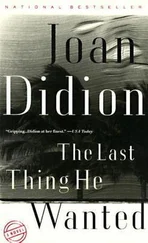I had no answers.
I had no prognosis.
I did not know how this had happened.
There were two possibilities, both of them, I came to see, irrelevant. One possibility was that she had fallen and the trauma had caused a bleed into her brain, a danger of the anticoagulants she had been given to prevent emboli. The second possibility was that the bleed into her brain had occurred before the fall and in fact caused it. People on anticoagulants bleed. They bruise at a touch. The level of anticoagulant in the blood, which is measured by a number called the INR (International Normalized Ratio), is hard to control. The blood must be tested every few weeks and in some cases every few days. Minute and complicated changes must be made in dosage. The ideal INR for Quintana was, give or take a tenth of a point, 2.2. On the day she flew to Los Angeles it so happened that her INR was over 4, a level at which spontaneous bleeding can occur. When I got to Los Angeles and spoke to the chief surgeon, he said that he was “one hundred percent sure” the trauma had caused the bleed. Other doctors to whom I spoke were less certain. It was suggested by one that the flight alone could have caused sufficient changes in pressurization to precipitate a bleed.
I recall pressing the surgeon on this point, myself trying (one more time) to manage the situation, get answers. I was talking to him on a cell phone from the courtyard outside the UCLA Medical Center cafeteria. The cafeteria was named “Café Med.” This was my first visit to Café Med and my introduction to its most noticeable regular, a small balding man (I assumed a Neuropsychiatric Institute patient with walkaround privileges) whose compulsion it was to trail one or another woman through the cafeteria, alternately spitting and mouthing enraged imprecations about how disgusting she was, how vile, what a piece of worthless trash. On this particular morning the small balding man had trailed me out to the courtyard and it was hard to make out what the surgeon was saying. “It was the trauma, there was a ruptured blood vessel, we saw it,” I thought he said. This had not seemed to entirely address the question — a ruptured blood vessel did not categorically rule out the possibility that the ruptured blood vessel had preceded and caused the fall — but there in the Café Med courtyard with the small balding man spitting on my shoe I realized that the answer to the question made no difference. It had happened. It was the new fact on the ground.
During the course of this call from the surgeon, which took place on the first full day I spent in Los Angeles, I recall being told several other things.
I recall being told that her coma could continue for days or weeks.
I recall being told that it would be a minimum of three days before anyone could begin to know what shape her brain was in. The surgeon was “optimistic,” but no prediction was possible. Many more urgent issues could come up in the next three or four or more days.
She could develop an infection.
She could develop pneumonia, she could develop an embolism.
She could develop further swelling, which would necessitate reoperating.
After I hung up I walked back into the cafeteria, where Gerry was having coffee with Susan Traylor and my brother’s daughters, Kelley and Lori. I remember wondering whether to mention the more urgent issues the surgeon had mentioned. I saw when I looked at their faces that there was no reason not to: all four of them had been at the hospital before I got to Los Angeles. All four of them had already heard about the more urgent issues.
During the twenty-four December and January nights when Quintana was in the sixth-floor ICU at Beth Israel North I had kept on the table by my bed a paperback copy of Intensive Care: A Doctor’s Journal, by John F. Murray, M.D., who had been from 1966 to 1989 chief of the Pulmonary and Critical Care Division at the University of California medical school in San Francisco. Intensive Care describes, day by day, a four-week period in a San Francisco General Hospital medical ICU for which Dr. Murray was at the time the attending physician responsible for all patients, residents, interns, and medical students. I had read this account over and over. I had learned much that proved useful in the calibration of my daily dealings with the ICU doctors at Beth Israel North. I had learned for example that it was often difficult to gauge when the time was right for extubation, the removal of an endotracheal tube. I had learned that a common barrier to extubation was the edema so predictably seen in intensive care. I had learned that this edema was less often the result of an underlying pathology than of an excess in the administration of intravenous fluid, a failure to observe the distinction between hydration and overhydration, an error of caution. I had learned that many young residents made a similar error of caution when it came to extubation itself: their tendency, because the outcome was uncertain, was to delay the procedure longer than necessary.
I had registered these lessons. I had made use of them: the tentative question here, the expressed wish there. I had “wondered” if she might not be “waterlogged.” (“Of course I don’t know, I just know how she looks.”) I had deliberately used the word “waterlogged.” I had noticed a stiffening when I used the word “edema.” I had further “wondered” if she might not be better able to breathe if she was less waterlogged. (“Of course I’m not a doctor, but it just seems logical.”) I had again “wondered” if the monitored administration of a diuretic might not allow extubation. (“Of course this is a home remedy, but if I felt the way she looks I’d take a Lasix.”) With Intensive Care as my guide it had seemed straightforward, intuitive. There was a way to know if you had made headway. You knew you had made headway when a doctor to whom you had made one or another suggestion presented, a day later, the plan as his own.
This was different. A certain derisive phrase had occurred to me during the edema contest of wills at Beth Israel North: It’s not brain surgery. This was. When these doctors at UCLA said “parietal” and “temporal” to me I had no idea where in the brain they were talking about, let alone what they meant. “Right frontal” I thought I could understand. “Occipital” I thought suggested “eye,” but only on the misconceived reasoning that the word began with “oc,” like “ocular.” I went to the UCLA Medical Center bookstore. I bought a book described on its cover as a “concise overview of neuroanatomy and of its functional and clinical implications” as well as an “excellent review for the USMLE.” This book was by Stephen G. Waxman, M.D., chief of neurology at Yale — New Haven, and was called Clinical Neuroanatomy. I skimmed successfully through some of the appendices, for example “Appendix A: The Neurologic Examination,” but when I began to read the text itself I could think only of a trip to Indonesia during which I had become disoriented by my inability to locate the grammar in Bahasa Indonesia, the official language used on street signs and storefronts and billboards. I had asked someone at the American Embassy how to tell the verbs from the nouns. Bahasa was a language, he had said, in which the same word could be either a verb or a noun. Clinical Neuroanatomy seemed to be one more case in which I would be unable to locate the grammar. I put it on the table by my bed at the Beverly Wilshire Hotel, where it would remain for the next five weeks.
On further study of Clinical Neuroanatomy, say if I woke in the morning before The New York Times had arrived with its sedative crossword puzzle, even “Appendix A: The Neurologic Examination” seemed opaque. I had originally noticed the obvious familiar directives (ask the patient the name of the president, ask the patient to count backwards from one hundred by sevens), but as days passed I seemed focused on a mysterious narrative, identified in Appendix A as the “gilded-boy story,” that could be used to test memory and comprehension. The patient could be told the story, Dr. Waxman suggested, then asked to retell it in his own words and explain its meaning. “At the coronation of one of the popes, about 300 years ago, a little boy was chosen to play the part of an angel.”
Читать дальше
Конец ознакомительного отрывка
Купить книгу












